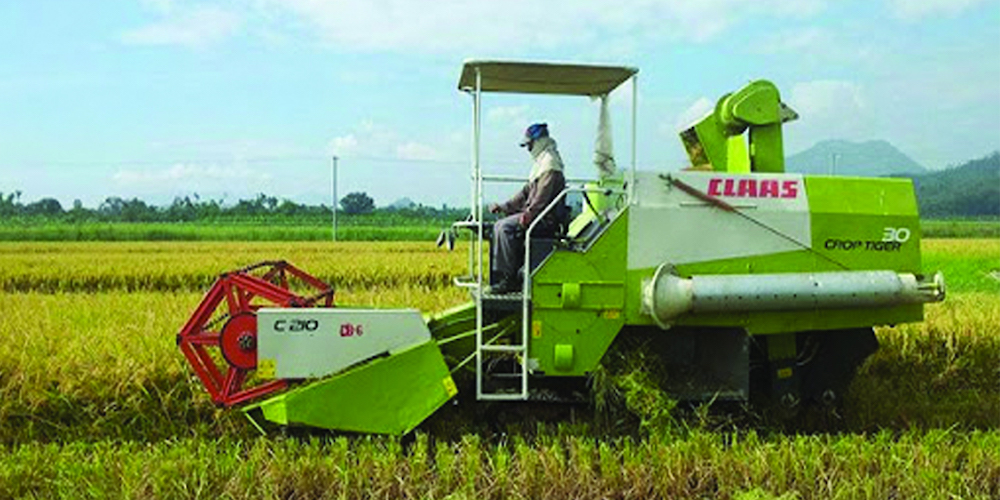Realising the Agricultural Mission

The Union Agriculture Ministry is in the process of finalizing a framework for creating “Agristack” in the country, which will serve as a foundation to build innovative agri-focused solutions leveraging digital technologies to contribute effectively towards increasing the income of farmers and improve efficiency of the Agriculture sector in the country.
Once finalized, Agristack can serve as a foundation to build innovative agri-focused solutions.
The framework is being devised by a High Level Task Force, constituted by the government. This Task Force is in the process of finalizing the “India Digital Ecosystem of Agriculture (IDEA)” report.
The Task Force invited comments from subject experts, farmers, Farmer Producer Organizations (FPOs) and the general public and considered them.
In this regard, leading Technology/Agri-tech/Start-Ups companies were identified and invited to collaborate with the Government of India and develop Proof of Concepts (PoC) based on data of select Districts/ Villages. A public call through the Department’s website was issued inviting proposals for Memorandum of Understanding (MoU).
Companies were invited to sign MoU on a purely pro bono basis and develop the PoCs. These PoCs will help in understanding the uses of Agristack and service & solutions that can be built using available data and some of them, if found beneficial to the farmers will be scaled up at National level.
In this regard, the Government has signed MoUs with leading Technology/Agri-tech Players & Start-ups for working on Proof of Concepts (PoCs) in the select Districts/Villages.
The Modi government says that it has a “Digital Agriculture Mission”. Towards its realisation, there is “National e-Governance Plan in Agriculture guideline”, under which funds are released to the States/Union Territories for the projects involving use of modern information technologies such as such as Artificial Intelligence & Machine Learning, Block Chain Technology, Internet of Things, Robotics etc., and for customization/shifting of web & mobile applications already developed by the States, to the platform to be developed using digital technologies.
There are also various mobile applications, including “Kisan Suvidha”, that have also been developed to facilitate dissemination of information to farmers on the critical parameters viz., Weather, Market Prices, Plant Protection, Agro-advisory, Extreme Weather Alerts, Input Dealers ( of Seed, Pesticide, Fertilizer, Farm Machinery), Soil Health Card, Cold Storage & Godowns, Soil Testing Laboratories and Veterinary Centre & Diagnostic labs, Crop Insurance Premium Calculator and the Government schemes.
All these steps are aimed at doubling the farmers’ income in the country, it is said.
It may be noted that the Modi Government had consulted an Inter-ministerial Committee in April, 2016 to examine issues relating to “Doubling Farmers Income” and recommend strategies to achieve the same. The Committee submitted its report to the Government in September, 2018 containing the strategy for doubling farmers’ income by the year 2022.
The Committee on Doubling Farmers’ Income (DFI) recognizes agriculture as a value led enterprise and has identified seven major sources of growth viz., (i) Increase in crop productivity; (II) Increase in livestock productivity; (III) Resource use efficiency or savings in the cost of production; (IV) Increase in the cropping intensity; (V) Diversification towards high value crops; (VI) improvement in real prices received by farmers; and (VII) Shift from farm to non-farm occupations.
After acceptance of the DFI Committee recommendations, the Government has consulted an ‘Empowered Body’ to review and monitor the progress.
Meanwhile, the Government of India is recommending soil test based balanced and integrated nutrient management (INM) through conjunctive use of both inorganic and organic sources (manure, biofertilizers green manuring, in-situ crop residue recycling etc.) of plant nutrients with 4Rs approach i.e right quantity, right time, right mode and right type of fertilizer for judicious use of chemical fertilizers and to reduce use of chemical fertilizers. In addition, split application, use of slow releasing fertilizers including “neem coated urea” and growing leguminous crops are also advocated and use of Resource Conservation Technologies (RCTs) are also advocated.
INM has been promoted through implementation of Soil Health Card (SHC) scheme since 2015. Soil health card provides nutrient status of the soil along with prescription about balanced and integrated use of inorganic and organic fertilizers to maintain good soil health that results in increase in production. Demonstrations about balanced use of fertilizers based on soil health card recommendations and training to the farmers on proper and integrated use of fertilizers are integral part of the scheme.
Financial assistance is provided to State governments for training of farmers, demonstrations on farmer fields and organizing farmer melas. The steps are being taken to improve the quality of soil under National Project on Management of Soil Health & Fertility are given below:
(i) Government has been implementing the Soil Health Card (SHC) scheme under National Project on Management of Soil Health & Fertility since 2015 to provide soil test based fertilizer use recommendations periodically to the farmers in the country. Soil health card provides nutrient status of the soil along with prescription about balanced and integrated use of inorganic and organic fertilizers to maintain good soil health.
(ii) Demonstrations about balanced use of fertilizers based on soil health card recommendations and training to the farmers on proper and integrated use of fertilizers are integral part of the scheme. Financial assistance is provided to State governments for training of farmers, demonstrations on farmer fields and organizing farmer melas.
(iii) Since 2015, around 6.45 lakh demonstrations, 93781 farmer’s trainings and 7425 farmers melas have been organized/conducted under the programme.
(iv) Under Soil Health Management scheme financial assistance to states is provided for promotion of micro-nutrients @ Rs 500 per hectare. Since 2015, financial assistance for promotion of micro-nutrients to 10.29 lakh hectare has been provided to states.
(v) The Government of India assesses the requirement of fertilizers before each cropping season i. e Kharif and Rabi during the Zonal Conference on Agricultural Inputs. The Department of Fertilizers on that basis issues the supply plan and ensure the availability of fertilizers through domestic production and imports



